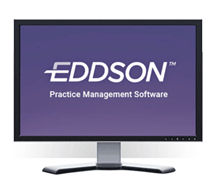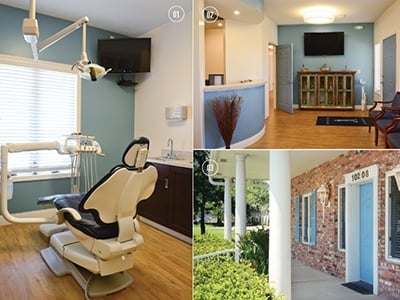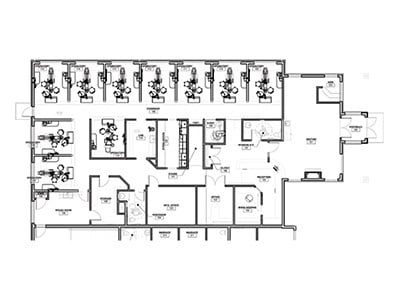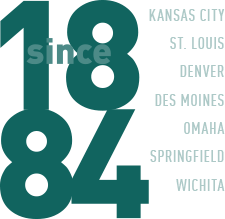Nothing is more fundamental to a business than finances and accounting. Unfortunately, private dental practices sometimes overlook these tasks for more urgent matters, like taking care of patients. After all, serving patients is the reason you are in business in the first place.
 The truth is that every practice can benefit from better control over their books, but better accounting does not have to be complicated. For many dentists, profitability can be improved by simply getting paid for the work they have already done.
The truth is that every practice can benefit from better control over their books, but better accounting does not have to be complicated. For many dentists, profitability can be improved by simply getting paid for the work they have already done.
When improving profitability, private dental practices should first focus on three core areas. We call these the Practice Profitability Factors:
- Production Volume
- Collection Efficiency
- Overhead Management
Let’s look at each factor in more detail.
1. Production Volume
The first factor we evaluate when analyzing a practice’s finances is production volume. Are you producing enough dentistry to be profitable?
This question is not as straightforward as it might seem. Just because your practice is busy doesn’t mean it is producing enough. The type of production is just as important as the amount of work.
Since “time in chair” is a misleading metric, the one we use to diagnose Production Volume issues is Production Value per Hour (PV/H). Many doctors find that despite being busy, their PV/H is not has high as it should be. In some cases, PV/H can drop as low as $100/hour, which is not sufficient revenue for most practices.
PV/H tells the real story of a practice’s profitability. Target PV/H should be between $300-375/hour. Low PV/H might have a few causes:
- Not presenting comprehensive treatment plans. When presenting treatment, it is tempting for some doctors to focus on what they think the patient is willing to pay, instead of focusing on the care they need. Not only is this bad for the patient, but doctors lose out on revenue from more valuable procedures. For example, instead of doing crowns, doctors might opt for multi-surface fillings to make it less expensive for the patient.
- Low case acceptance. The average practice has an estimated $500,000 a year in diagnosed but unscheduled treatment. How you explain the treatment is just as important as defining the condition. Communication is a critical function of running a successful practice.
- Empty chairs. Every hour you aren’t seeing patients is lost production value. Are you scheduling in a way that optimizes your facilities? How frequently do you deal with patients canceling? Scheduling efficiency is a valuable metric to determine how well you’re spending your time.
Gross Production vs. Net Production
Another factor to consider is Gross Production (GP) vs. Net Production (NP). Gross Production (GP) refers to total production before adjustments such as discounts and insurance write-offs are deducted. Net Production (NP) is the total production after all adjustments are accounted for. NP is often referred to as “Collectable Production” and represents the production that can be collected from patients and insurance reimbursement.
The relationship between the two, while often overlooked, is critical. It helps a practice, in aggregate, understand what the hard costs are of participating in PPO insurance plans. Better, more accurate information will always allow you to make better, more informed business decisions.
Many practice management software programs will not account for this delta in production reporting, and could, therefore, leave you in the dark to that lost revenue, or require significant administrative work to calculate it manually.
Looking for a better solution to account for production volume?
2. Collection Efficiency
As important as production volume is to your practice, it doesn’t matter if you aren’t collecting what you are owed. Collection Efficiency is the second most critical Practice Profitability Factor, and possibly the one with the biggest impact.
Dental practices that are in-network with insurance providers will always deal with AR related to claims management (more on that in the next section). It is that much more critical then, to collect on patient portion of services as efficiently as possible. Many practices who excel at this maintain a policy of collecting patient portion at the time of service.
However, it is one thing to have the policy in place, and another to follow it. What is your protocol when a patient says, “I forgot my checkbook!” To avoid any awkward conversations after a procedure, we highly recommend requiring upfront payment for services.
After all, what other business lets you walk out the door without payment? Third-party financing can also be a great tool that not only keeps your practice AR down, but also provides a valuable service to patients. Third-party financing allows them to receive the treatment they need, without the stress of coming up with the full out-of-pocket amount up front.
Insurance Management
Insurance Management is a cumbersome task that typically requires hours of administration each week to manage effectively. A typical private dental practice can generate anywhere between 60-150 insurance claims every week, representing 30-60% of the practice’s revenue.
Poor insurance and claims management will almost always result in denied claims or slow payments from carriers which ultimately results in reduced collections efficiency and profitability.
Moreover, it can create a poor experience for your patients. If you are unable to estimate the out-of-pocket cost for a patient accurately, it may create confusion and frustration at the time of payment. This is especially true if the patient ends up owing more than the original estimate.
Need more insight to improve your collection efficiency?
3. Overhead Management (OM)
Overhead management, the third practice profitability factor, should be the last factor explored for improvement because it often has the smallest impact on a practice’s bottom line.
If your practice is missing out on tens of thousands of dollars in production volume – or hundreds of thousands in uncollected revenue – then those areas should be the top priority. However, once your production volume and collection efficiency have improved, we turn our attention to Overhead Management to solidify a practice’s financial standing.
Cutting expenses is important, but one of the best cost-saving strategies is to treat your employees well. The cost of turnover is incredibly high when you account for training and downtime. Creating an equitable compensation package that is competitive in the marketplace can help promote stability in this area and keep turnover costs at a minimum.
As a general rule of thumb, practices should regularly review expenses and cut unnecessary costs.
Measuring Your Practice Profitability Factors
In our data-driven world, there are literally hundreds of metrics we could choose to measure. Determine which Key Performance Metrics (KPIs) is often subject to debate, but the most important thing is to choose the right KPIs for your business and stick with them. We will cover KPIs in greater detail in a future article.
Improving your practice’s finances does not have to be complicated. By focusing on the three Practice Profitability Factors, you can make significant improvements in just a short period of time.
EDDSON Practice Management Software was built by Goetze Dental to make measuring profit profitability easier! Learn more about how your colleagues are benefitting.
















